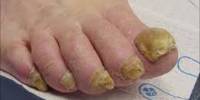Could a simple tablet one day take the place of exercise? Although it may sound like a far-fetched concept from a lethargic dystopian future, it is actually a notion that several scientists are already investigating, with some encouraging findings.
The target audience for this “workout in a pill” is not couch potato. People who are unable to exercise but would benefit from it, such as the elderly, those who are severely obese, those who are disabled, or those who are recovering from surgery, are among the main driving forces behind this research.
One of the best “medicines” for your body, particularly when it comes to delaying aging, is regular exercise. Additionally, it frequently has positive effects on heart rate, blood pressure, fitness, body fat, weight, mental health, and cognitive function. Scientists have been eager to explore if treatment could activate some of the crucial biochemical processes triggered by exercise without engaging in any physical activity, despite the fact that it seems doubtful they would ever be able to create a substitute for the real thing.
One intriguing study from 2017 investigated if the use of the unlawful performance-enhancing medications GW501516 and GW1516—which are offered on the black market—could increase the fitness of mice.
The mice could run on a treadmill for over 100 minutes longer than controls after taking this medication for eight weeks. It functioned by turning on a biological pathway that causes the muscles to burn fat during exercise rather than using sugar as an energy source.
But this type of fitness is only one aspect of exercise. A unique medication that replicates the changes in muscle and bone that happen as a result of the exercise was produced in a more recent study by Tokyo Medical and Dental University and published in Bone Research.
Given to mice, the aminoindazole derivative medication known as locamidazole was found to promote the formation of muscle cells and osteoblasts while inhibiting the growth of bone-resorbing cells (osteoclasts). Theoretically, this means that the medicine was facilitating exercise’s effects on strengthening bones and muscles.
Another study that was done earlier this year identified a blood molecule created during exercise in the journal Nature. After administering this chemical to mice, researchers noticed that they consumed less food and had an improved metabolic profile.
The majority of the research so far has been conducted in animal trials, and there are currently relatively few scientists studying this kind of medication on humans.
It may also be clear that each line of inquiry focuses on just one component of the health advantages of exercise. A single treatment could be able to address fitness and enhance bones, but could it ever deliver all the intricate benefits of exercise? Even if it appears implausible, it is conceivable.
Having said that, there does seem to be some hope for those who are confined to a hospital bed or who have another illness that makes it difficult for them to exercise.
















